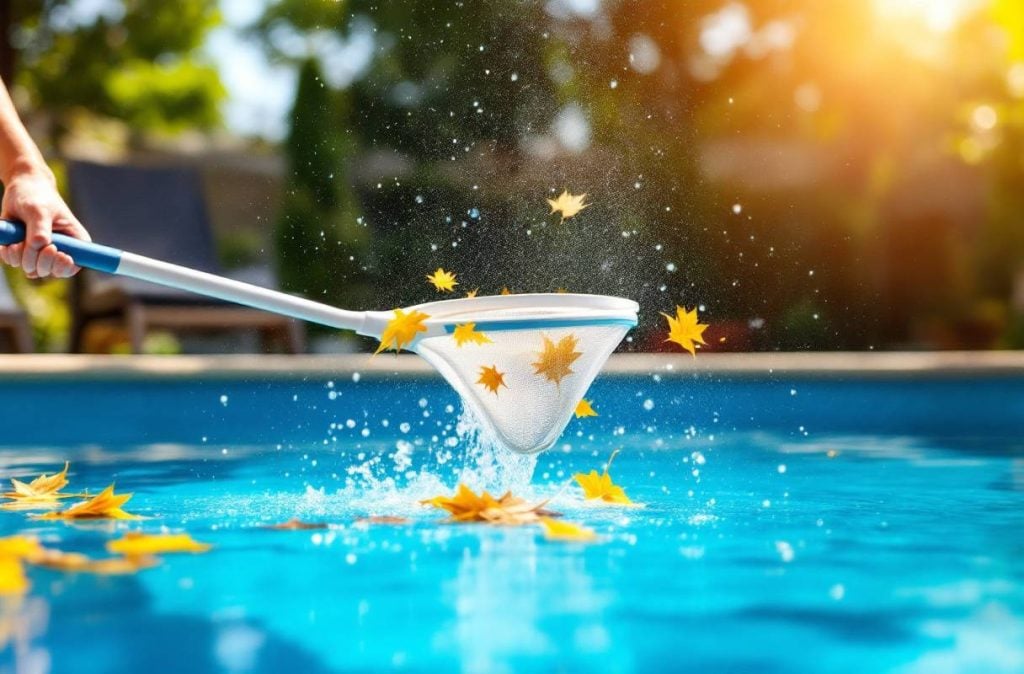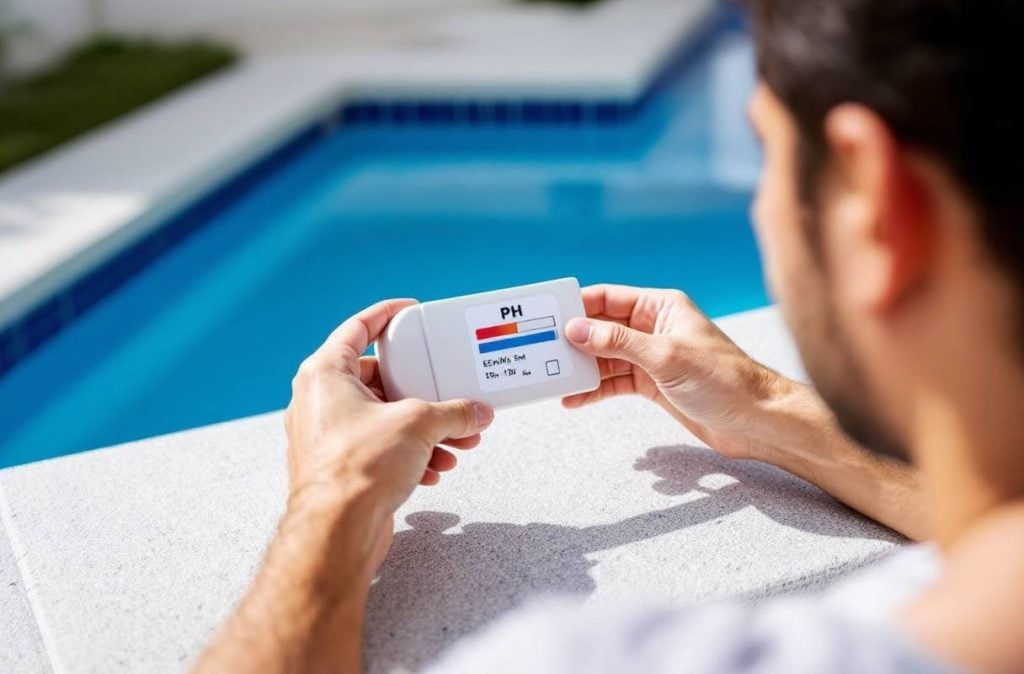Maintaining a clean and healthy swimming pool requires regular attention and proper techniques. Whether you’re a new pool owner or looking to enhance your pool maintenance routine, understanding the fundamentals of pool cleaning is essential. This guide will walk you through the step-by-step process of keeping your pool in pristine condition.
Importance of Regular Pool Cleaning
- Ensures Safe and Healthy Swimming Conditions: Regular cleaning removes harmful bacteria, algae, and debris that can pose health risks to swimmers.
- Prolongs the Lifespan of Pool Equipment and Surfaces: Consistent maintenance prevents wear and tear on pool surfaces and equipment, reducing the need for costly repairs or replacements.
Benefits of Maintaining a Clean Pool
- Enhances Water Clarity and Aesthetics: Clearwater is visually appealing and inviting, making your pool a pleasant place for relaxation and recreation.
- Prevents Algae Growth and Equipment Malfunctions: Proper cleaning inhibits the growth of algae and ensures that filtration systems and other equipment operate efficiently.
This guide will cover everything from the essential tools and supplies needed for pool cleaning to detailed instructions on skimming, brushing, vacuuming, filtering, balancing water chemistry, and regular maintenance schedules.
Tools and Supplies Needed
Before diving into the cleaning process, it’s crucial to gather all necessary tools and supplies. Having the right equipment on hand ensures that you can perform each step effectively and efficiently.
Essential Pool Cleaning Tools
1. Skimmer Net:
- Purpose: Removes surface debris such as leaves, insects, and oils.
- Usage: Glide the net across the water’s surface to capture floating particles.
2. Pool Vacuum:
- Types: Manual or automatic.
- Purpose: Cleans the pool floor by sucking up dirt and debris.
- Usage: Attach to the skimmer or dedicated vacuum line and systematically clean the pool floor.
3. Pool Brush:
- Purpose: Scrub the walls and tiles to remove algae, dirt, and stains.
- Usage: Brush in a consistent pattern, focusing on areas prone to buildup.
4. Telescopic Pole:
- Purpose: Extends your reach, making it easier to clean all areas of the pool without straining.
- Usage: Attach cleaning tools like the skimmer net or brush to the pole for efficient cleaning.
Water Testing and Chemical Supplies
1. Water Testing Kit:
- Purpose: Check the pH, chlorine levels, and other chemical balances in the pool water.
- Usage: Test the water regularly to ensure it meets safety and cleanliness standards.
2. Pool Chemicals:
- Types: Chlorine, pH adjusters (like muriatic acid or soda ash), algaecides, and clarifiers.
- Usage: Add chemicals as needed based on water test results to maintain balanced and sanitized water.
Additional Equipment
1. Pool Filter:
- Types: Sand, cartridge, and diatomaceous earth (DE) filters.
- Purpose: Removes contaminants from the water, ensuring it remains clean and clear.
- Maintenance Tools: Backwash hoses, filter cleaning solutions, and replacement parts as needed.
2. Pool Cover:
- Purpose: Protects the pool from debris when not in use, reducing the frequency of cleaning required.
- Types: Solar covers, safety covers, and winter covers.
- Usage: Secure the cover over the pool when it’s not in use to keep out leaves, dirt, and pests.
Step 1: Skimming the Surface
Skimming the pool’s surface is the first crucial step in maintaining a clean pool. This process removes floating debris, preventing it from sinking and decomposing, which can affect water quality.

Purpose of Skimming
- Removes Floating Debris: Eliminates leaves, insects, oils, and other particles that accumulate on the water’s surface.
- Prevents Decomposition: Prevents debris from breaking down in the water, which can lead to algae growth and cloudy water.
How to Properly Use a Skimmer Net
1. Best Times to Skim:
- Morning and Evening: Early morning or late evening are ideal as debris accumulates overnight and during peak sunlight hours.
2. Techniques for Effective Skimming:
- Slow, Methodical Movements: Glide the skimmer net slowly across the surface to capture as much debris as possible.
- Overlap Passes: Ensure each pass overlaps slightly with the previous one to avoid missing any spots.
- Avoid Scratching the Pool Surface: Use gentle motions to prevent damaging pool surfaces or leaving scratches.
Frequency of Skimming
- Daily or As Needed: Depending on the pool’s usage and surrounding environment, skimming should be performed daily or whenever debris is visible.
Step 2: Cleaning the Pool Walls and Floor
After skimming the surface, the next step is to clean the pool walls and floor to remove dirt, algae, and other buildup that can affect water quality and appearance.
Brushing the Pool Walls and Tiles
1. Importance of Removing Algae and Dirt Buildup:
- Prevents Slippery Surfaces: Algae can make pool surfaces slippery and unsafe.
- Enhances Water Clarity: Removing buildup helps maintain clear and inviting water.
2. Proper Brushing Techniques and Patterns:
- Consistent Patterns: Use vertical and horizontal strokes to cover the entire surface evenly.
- Focus on Problem Areas: Pay extra attention to corners, steps, and other areas where algae and dirt are more likely to accumulate.
- Use the Right Brush: Choose a brush suitable for your pool surface to avoid damage.

Vacuuming the Pool
Types of Pool Vacuums:
- Manual Vacuums: These require a physical effort but offer control over the cleaning process.
- Automatic Vacuums: Operate independently, saving time and effort.
1. Step-by-Step Vacuuming Process:
- Connect the Vacuum: Attach the vacuum head to the telescopic pole and hose, then connect to the skimmer or dedicated vacuum line.
- Set the Filter to Vacuum Mode: If using a multi-port valve, ensure it’s set to the correct position for vacuuming.
- Vacuum in a Systematic Pattern: Move the vacuum slowly and methodically across the pool floor to ensure thorough cleaning.

Addressing Stubborn Stains and Algae
1. Spot Treatment Methods:
- Identify the Stain Type: Determine whether it’s algae, mineral deposits, or organic stains.
- Use Appropriate Cleaners: Apply specialized cleaners or treatments based on the stain type.
2. Recommended Products for Tough Stains:
- Algaecides: Effective against different types of algae.
- Stain Removers: Formulated to tackle mineral and organic stains without damaging the pool surface.
Step 3: Cleaning the Pool Filter
The pool filter plays a critical role in maintaining water clarity and cleanliness. Regular cleaning ensures it operates efficiently and extends its lifespan.
Understanding Your Pool Filter Type
1. Sand Filters:
- Mechanism: Uses sand to trap debris as water passes through.
- Maintenance: Requires regular backwashing to remove trapped particles.
2. Cartridge Filters:
- Mechanism: Utilizes a cartridge to filter out contaminants.
- Maintenance: The cartridge needs periodic removal and cleaning.
3. Diatomaceous Earth (DE) Filters:
- Mechanism: Uses fine DE powder to capture microscopic particles.
- Maintenance: Involves backwashing and adding new DE powder as needed.
Cleaning Procedures for Each Filter Type
1. Backwashing Sand and DE Filters:
- Procedure: Reverse the water flow to flush out trapped debris.
- Frequency: Typically every 4-6 weeks or when pressure gauges indicate increased resistance.
2. Removing and Cleaning Cartridge Filters:
- Procedure: Remove the cartridge, rinse it with a hose, and soak it in a cleaning solution if necessary.
- Frequency: Every few weeks, depending on usage and water quality.
Maintenance Tips
- Regular Cleaning Schedules: Adhere to a consistent maintenance routine to keep filters functioning optimally.
- When to Replace Filter Media: Monitor filter performance and replace sand or DE as recommended by the manufacturer.
Step 4: Balancing the Pool Water Chemistry
Proper water chemistry is vital for swimmer comfort, equipment longevity, and overall pool health. Balancing the water ensures it is safe and pleasant to swim in.

Importance of Proper Water Balance
- Ensures Swimmer Comfort: Balanced water prevents skin and eye irritation.
- Protects Equipment Longevity: Maintains the integrity of pool surfaces and equipment by preventing corrosion and scaling.
Testing the Water
1. How to Use a Water Testing Kit Effectively:
- Follow Instructions Carefully: Ensure accurate measurements by adhering to the kit’s guidelines.
- Test Regularly: Conduct tests at least once a week and after heavy usage or weather events.
2. Key Parameters to Check:
- pH Levels: Ideal range is 7.4 to 7.6.
- Chlorine Levels: Maintain between 1.0 and 3.0 ppm.
- Alkalinity: Should be between 80 and 120 ppm.
- Calcium Hardness: Keep between 200 and 400 ppm.
Adjusting Chemical Levels
1. Adding Chemicals to Balance pH and Chlorine:
- pH Adjusters: Use muriatic acid to lower pH or soda ash to raise it.
- Chlorine: Add chlorine tablets, liquid chlorine, or granular chlorine to maintain sanitizer levels.
- Alkalinity Adjusters: Use baking soda to increase alkalinity if needed.
2. Safe Handling and Storage of Pool Chemicals:
- Protective Gear: Wear gloves and goggles when handling chemicals.
- Proper Storage: Keep chemicals in a cool, dry place away from direct sunlight and out of reach of children.
Maintaining Consistent Chemical Levels
- Regular Testing and Adjustments: Continuously monitor and tweak chemical levels to adapt to changes in usage, weather, and evaporation.
- Understanding the Effects of Weather and Pool Usage: Heavy rains, high temperatures, and increased bather load can alter water chemistry, necessitating adjustments.
Step 5: Maintaining Proper Water Levels
Maintaining the correct water level is essential for optimal filtration and circulation, ensuring that the pool system operates efficiently.
Importance of Correct Water Levels
- Ensures Optimal Filtration: Proper water levels allow skimmers and other filtration components to function correctly.
- Prevents Equipment Damage: Avoids running pumps and filters dry, which can cause overheating and damage.
How to Check Water Levels
1. Visual Indicators:
- Mid-Point of Skimmer Opening: The water level should be at the midpoint of the skimmer’s opening.
2. Measurement Techniques:
- Use a Pool Level Indicator: Tools like floating pool level indicators can provide precise measurements.
Adjusting Water Levels
1. Adding Water to the Pool:
- Method: Use a hose to add water gradually, ensuring not to overfill.
- Frequency: Refill as needed based on evaporation and water loss from cleaning.
2. Draining Excess Water Safely:
- Method: Use a submersible pump or siphon to remove excess water.
- Cautions: Avoid draining too much to prevent stressing the pool structure and equipment.
Step 6: Shocking the Pool
Shocking the pool involves adding a high dose of chlorine or other oxidizers to eliminate contaminants and maintain water clarity.

What is Pool Shocking?
- Definition: A process of super-chlorinating the pool to break down organic contaminants, chloramines, and other pollutants.
- Purpose: Restores water clarity, sanitizes the pool and eliminates unpleasant odors.
When to Shock the Pool
- After Heavy Usage: Increases sanitizer demand due to higher bather load.
- Following Rainstorms: Rain can dilute chemicals and introduce debris and contaminants.
- During Algae Blooms: Essential for eliminating algae growth and restoring water clarity.
How to Properly Shock the Pool
1. Choosing the Right Shock Product:
- Calcium Hypochlorite: Fast-acting chlorine shock.
- Sodium Dichlor: Stabilized chlorine shock.
- Non-Chlorine Shock: Uses potassium monopersulfate for oxidizing without adding chlorine.
2. Step-by-Step Application Process:
- Calculate the Required Amount: Based on pool volume and current chlorine levels.
- Dissolve in Water (if required): Some shocks need to be pre-dissolved before application.
- Distribute Evenly: Pour the shock solution around the pool’s perimeter while the pump is running.
- Allow Proper Circulation: Let the pump run for several hours to ensure even distribution.
Safety Precautions
- Protecting Skin and Eyes: Wear gloves and goggles to prevent contact with concentrated chemicals.
- Ensuring Proper Ventilation: If using liquid shock, apply in a well-ventilated area to avoid inhaling fumes.
Step 7: Regular Maintenance Schedule
Establishing a regular maintenance schedule ensures that all aspects of pool cleaning are addressed systematically, maintaining optimal pool health and appearance.
Weekly Tasks
- Skimming: Remove surface debris.
- Brushing: Clean pool walls and tiles.
- Vacuuming: Clean the pool floor.
- Water Testing: Check and adjust chemical levels.
Monthly Tasks
- Cleaning Filters: Backwash sand and DE filters or clean cartridge filters.
- Checking Water Levels: Ensure proper pool water levels.
- Inspecting Equipment: Examine pumps, heaters, and other equipment for proper operation.
Seasonal Tasks
- Preparing the Pool for Winter or Summer: Adjust equipment settings, add appropriate chemicals, and cover the pool.
- Deep Cleaning: Perform thorough cleaning, including scrubbing surfaces and inspecting for damage.
- Equipment Checks: Conduct comprehensive inspections and maintenance on all pool systems.
Additional Tips and Best Practices
Enhancing your pool maintenance routine with additional strategies can further ensure a clean and enjoyable swimming environment.
Preventing Algae Growth
- Regular Chemical Treatments: Maintain proper sanitizer levels to inhibit algae.
- Enhanced Circulation: Ensure the pool pump and filtration systems run efficiently to prevent stagnant areas.
Using a Pool Cover
1. Benefits of Covering the Pool When Not in Use:
- Reduces Debris Accumulation: Keeps leaves and insects out of the water.
- Conserves Water and Chemicals: Minimizes evaporation and chemical loss.
2. Types of Pool Covers and How to Use Them:
- Solar Covers: Absorb sunlight to help warm the pool.
- Safety Covers: Provide a barrier to prevent accidents.
- Winter Covers: Protect the pool during off-season storage.
Monitoring Pool Usage
- Managing Bather Load: High usage increases the demand for sanitation and filtration.
- Implementing Usage Guidelines: Encourage swimmers to shower before entering the pool to reduce contaminants.
Professional Pool Maintenance Services
1. When to Consider Hiring Professionals:
- Complex Maintenance Issues: Persistent water quality problems or equipment malfunctions.
- Time Constraints: When personal schedules prevent regular maintenance.
2. Benefits of Professional Inspections and Cleanings:
- Expertise: Professionals can identify and resolve issues that may be overlooked.
- Efficiency: Saves time and ensures thorough maintenance.
Safety Precautions
Ensuring safety during pool cleaning is paramount to protect yourself and others from potential hazards associated with pool maintenance.
Handling Pool Chemicals Safely
- Proper Storage: Keep chemicals in a cool, dry place away from direct sunlight and out of reach of children.
- Correct Usage: Follow manufacturer instructions for dosage and application to prevent overuse or accidental mixing of incompatible chemicals.
Protecting Yourself During Cleaning
- Wearing Appropriate Gear: Use gloves, goggles, and protective clothing to prevent skin and eye contact with chemicals and contaminants.
- Avoiding Slips and Falls: Use non-slip footwear and be cautious around pool steps and wet surfaces.
Electrical Safety Around Pool Equipment
- Ensuring Proper Grounding: All electrical equipment should be properly grounded to prevent electrical shocks.
- Regular Maintenance: Inspect electrical connections and equipment for signs of wear or damage, and address issues promptly.
Conclusion
Maintaining a clean and healthy swimming pool is a rewarding endeavor that enhances your outdoor living experience. By following this step-by-step guide, you can ensure your pool remains inviting, safe, and enjoyable for all users.
Recap of Step-by-Step Pool Cleaning Process
- Surface Skimming: Removes floating debris.
- Brushing and Vacuuming: Cleans walls, tiles, and pool floor.
- Filter Maintenance: Ensures efficient filtration.
- Water Chemistry Balancing: Maintains safe and clear water.
- Water Level Maintenance: Optimizes filtration and equipment performance.
- Shocking the Pool: Eliminates contaminants and restores water clarity.
- Regular Maintenance Schedule: Keeps pool systems functioning optimally.
Regular pool maintenance not only preserves the beauty and functionality of your pool but also ensures a safe and healthy environment for all swimmers. Consistency is key to preventing issues and minimizing the need for extensive repairs.
Final Tips for Enjoying a Clean and Healthy Pool
- Stay Informed: Keep up-to-date with the latest pool maintenance techniques and products.
- Be Proactive: Address minor issues promptly to prevent them from escalating.
- Enjoy Your Pool: With a well-maintained pool, you can fully enjoy the relaxation and fun it offers.
Recommended Products and Tools
- Pool Cleaning Kits: Comprehensive sets that include essential tools and testing supplies.
- High-Quality Filters: Durable filters that provide efficient water purification.
- Algaecides and Stain Removers: Specialized products for tackling specific pool issues.
Final Thoughts
Maintaining a swimming pool may seem daunting at first, but with the right knowledge and tools, it becomes a manageable and rewarding task. Regular cleaning and maintenance not only preserve the pool’s appearance and functionality but also ensure a safe and enjoyable environment for all swimmers.
Embrace the steps outlined in this guide, stay consistent with your maintenance routine, and enjoy the endless summer days by your sparkling clean pool.
Frequently Asked Questions (FAQs)
How often should I clean my pool?
Ideally, perform basic cleaning tasks like skimming and brushing daily, vacuuming weekly, and testing water chemistry at least once a week.
What are the essential tools for pool cleaning?
Essential tools include a skimmer net, pool vacuum, pool brush, telescopic pole, water testing kit, and appropriate pool chemicals.
How do I balance the pool water chemistry?
Regularly test the water for pH, chlorine levels, alkalinity, and calcium hardness, then adjust using the appropriate chemicals to maintain balanced levels.
When should I shock my pool?
Shock your pool after heavy usage, heavy rain, or if you notice algae growth or cloudy water to eliminate contaminants and restore clarity.
What type of pool filter is best for my pool?
The best filter type depends on your pool size and maintenance preferences. Sand filters are durable, cartridge filters are easy to clean, and DE filters offer the finest filtration.
Can I maintain my pool myself or should I hire professionals?
While DIY maintenance is manageable with the right knowledge and tools, hiring professionals can ensure thorough cleaning and address complex issues efficiently.
How do I prevent algae growth in my pool?
Maintain proper sanitizer levels, ensure good water circulation, regularly clean the pool, and use algaecides as needed to prevent algae growth.





